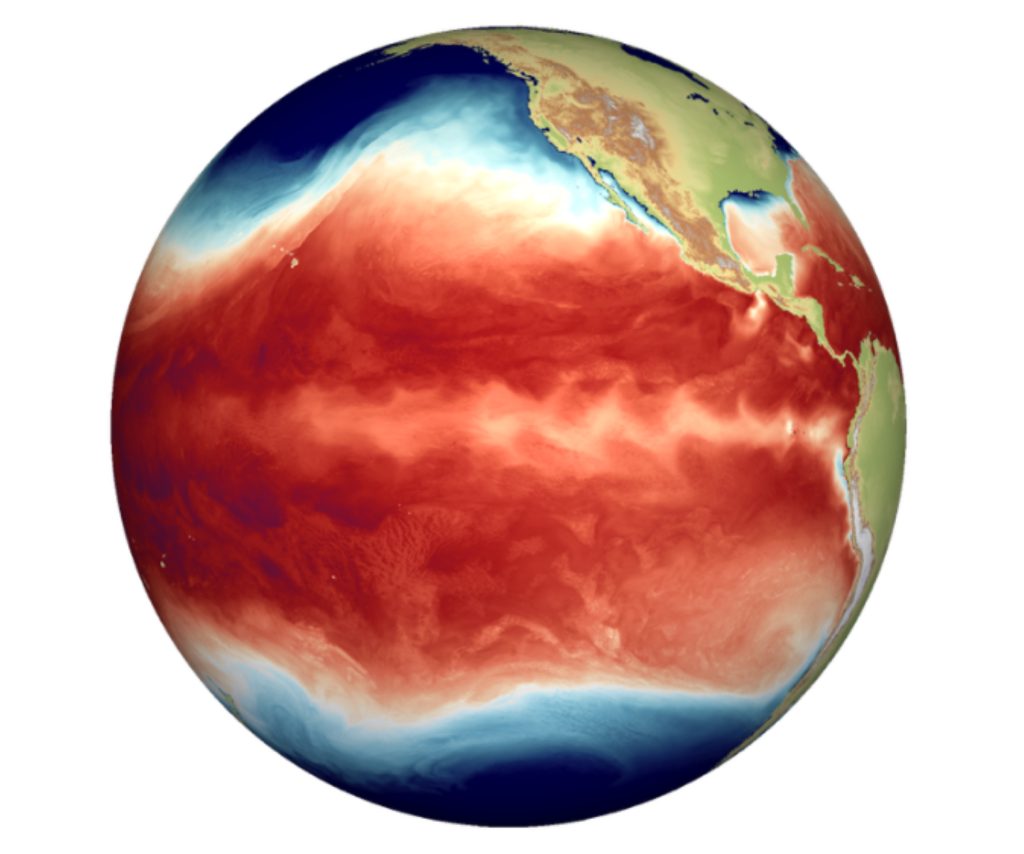UH study: Dramatic transformation of El Niño because of climate change could reshape weather worldwide
A new study led by University of Hawaiʻi at Mānoa researchers shows that a powerful climate pattern that dictates weather worldwide is projected to undergo a dramatic transformation because of greenhouse warming.
The international research team found that the El Niño-Southern Oscillation could intensify rapidly during the coming decades and synchronize with other major climate phenomena, reshaping global temperature and rainfall patterns by the end of the 21st century.
It was recently published in Nature Communications.

Projections show an abrupt shift within the next 30 to 40 years from irregular El Niño-La Niña cycles to highly regular oscillations, characterized by more dramatic fluctuations in sea surface temperature.
“In a warmer world, the tropical Pacific can undergo a type of climate tipping point, switching from stable to unstable oscillatory behavior,” said Malte Stuecker, lead author of the study, in an announcement of its findings.
Stuecker is director of the International Pacific Research Center at the University of Hawaiʻi at Mānoa School of Ocean and Earth Science and Technology.
“This is the first time this type of transition has been identified unequivocally in a complex climate model,” Stuecker said. “Enhanced air-sea coupling in a warming climate, combined with more variable weather in the tropics, leads to a transition in amplitude and regularity.”
Stronger and more regular El Niño-Southern Oscillation cycles are also expected to synchronize with other climate phenomena, including the North Atlantic Oscillation, the Indian Ocean Dipole and the Tropical North Atlantic mode, similar to how multiple weakly connected pendulums adjust to swinging with the same frequency.
“This synchronization will lead to stronger rainfall fluctuations in regions such as Southern California and the Iberian Peninsula, increasing the risk of hydroclimate ‘whiplash’ effects,” said Axel Timmermann, corresponding author of the study, in the announcement.
Timmermann, who is director of the IBS Center for Climate Physics at Pusan National University in South Korea, added that the increased regularity of El Niño-Southern Oscillation could improve seasonal climate forecasts; however, the amplified impacts will necessitate enhanced planning and adaptation strategies.

“Our simulation results, which some other climate models support, show that [El Niño-Southern Oscillation’s] future behavior could become more predictable, but its amplified impacts will pose significant challenges for societies worldwide,” said Sen Zhao, co-lead author of the study and researcher in the School of Ocean and Earth Science and Technology Department of Atmospheric Sciences, in the announcement.
The study highlights the potential for human-induced climate change to fundamentally alter the characteristics of El Niño-Southern Oscillation and its interactions with other climate processes — even in regions far away from the equatorial Pacific, such as Europe.
“Our findings underscore the need for global preparedness to address intensified climate variability and its cascading effects on ecosystems, agriculture and water resources,” Timmermann said.
The team plans to explore the underlying global synchronization processes in the future.



